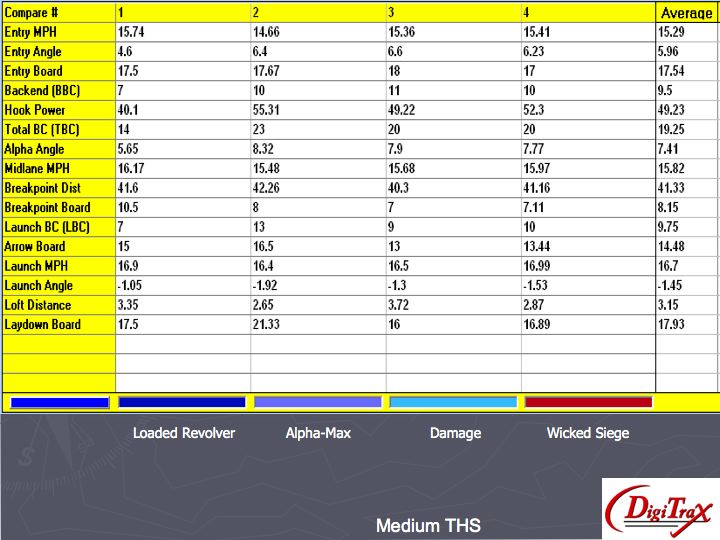

The Brunswick Damage Digitrax Analysis was done using Coach T as the bowler. The test was performed on a medium THS.
You can see that I am launching the ball at 16.5 mph and the ball enters the pocket at 15.4 mph. It doesn’t lose much speed as it rolls down lane and part of this is attributable to the fact the the Damage cover does not create much friction on its own. It does respond pretty quickly to dry boards though. I am targeting 13 at the arrows and 7 at the breakpoint, 40 feet. The breakpoint is a little earlier because my launch angle and targets are a little closer to the dry side of the house shot taper. What is obvious is the backend on this ball. It covered more boards from breakpoint to pins than both the Alpha-Max and Wicked Siege with a steep 6.6 degree entry angle.
The Brunswick Damage is a ball meant for lighter volumes. The cover is clean through the heads and stores plenty of energy for the backends. The analysis shows what happens when this ball sees friction. It flat out moves. I saw possibilities for 8 and 9 pin leaves due to the strength of the the entry angle. This is the “weakest” ball of the 4 compared above. That just means that it handles less oil volume than the others. So I’ve got to move closer to the dry boards, but have to make sure there’s enough room on the backend to allow the ball to make it’s big move. Ideally, you would use this ball when the lanes have opened up, allowing you to play a similar line to say the Wicked Siege, but getting a little further downlane and strong backend reaction. If you haven’t opened up the lane a little, you could find some over/under.
The Brunswick Damage fits well in the Brunswick lineup. It’s pretty close to a skid/flip reaction and is good for when the lanes open up.
